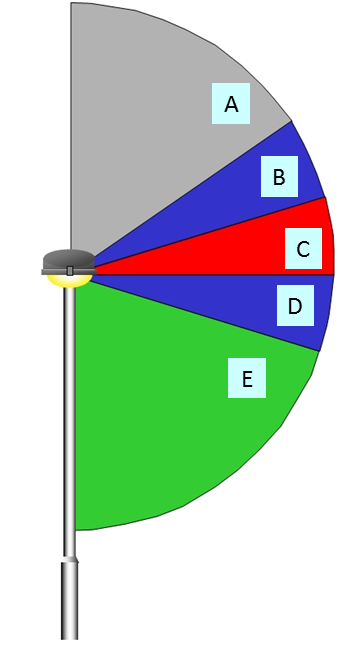Modelling a Lamppost
Diagram to show relative impact of a luminaire’s output with regards to contribution to skyglow.
 A
A 180-100° Critical area for skyglow from within urban areas but proportionally less impact to rural areas.
B 100-95° Significant contributor to skyglow, especially in rural areas where it is most aerosol dependent. Less likely to be obstructed.
C 99-90° Critical zone for skyglow and obtrusion seen at 10s of km (in rural areas) where it is strongly dependent on aerosol scattering.
D 90-70° Significant contributor to skyglow seen at a distance through reflection but reflected light more likely to be obstructed by buildings, trees and topography.
E 70-0° Ideal light distribution.